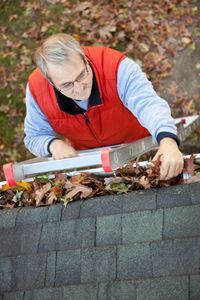Get Your Home Ready for Winter

There’s termination dust on the mountains, which means winter is on the way! Your kids may be ready for some snow, but is your home? Here are a few easy steps you can take now to ensure that your family stays warm when temperatures drop, to keep your utility bills under control, and to prevent cold-related damage that could require a visit from a repairperson.
Plumbing and Hoses
Drain water from faucets on the exterior of your home, roll up garden hoses and store them inside. If your home is older or hasn’t been weatherized, when temperatures drop below zero leave cabinet doors open in kitchen and bathrooms so warm air in your home can reach the pipes. Make sure everyone in the family knows how to turn off the water at the main valve should a pipe break.
Heating System
Get a routine furnace or boiler tune-up, which can prevent future damage and make sure that your heat doesn’t quit in the middle of a cold, winter night. The cost can vary depending on where you live and the condition of your furnace/boiler, but will likely be between $50-100.
Fireplace or Woodstove
Have your chimney inspected and cleaned by a professional. Stock up with a good supply of dry wood. Not only does dry wood burn hotter — heating your home more efficiently and allowing you to use less wood — but burning wet wood creates creosote that builds up in the chimney, which can cause problems. Cleaning the chimney removes the creosote. Burning dry wood with a complete burn nearly eliminates creosote buildup and the need to get your chimney cleaned.
Windows and Doors
If your windows are older, you may need to install storm windows and/or doors. Consider putting shrink film on the interior of older windows and adding weathering stripping to all door and window seals. Even putting rolled up towels at the bottom of doors and windows can cut down on drafts.
Trees and Gutters
Clear any tree limbs that could fall on your home — or call a professional to do it. If you do have trees over or near your home, clean the gutters and downspouts. When they get clogged, water can back up and increase the potential of ice dams, which are a hazard in a number of ways. Also, make sure water drains away from the house so water-related issues don’t develop around your foundation.
Roof and Shingles
Stay on the ground and look at your roof for missing shingles. Please do not climb onto your roof! If you spot areas that need repair, call a professional. Roofs may need to be replaced every 25 years but many last far longer. Every roof is different, so it’s worth having a professional evaluate if or when you’ll need a new one. The pro you hire may be able to perform temporary repairs to help your home get through winter.
Emergency Kit
Update your emergency kit. We suggest having flashlights and extra batteries, a first-aid kit, and several days of water, food and medicines. Just imagine your whole family (including your pets!) being in your home for a week with no lights, no heat, no power. What would you need? Tip: fill empty bottles with water and keep them in your freezer. If the power goes out, the ice will keep your food cold longer and melt into water if you need it.
More Tips and Resources
- AHFC: Reduce Your Energy Costs
- AHFC: Take an Energy Education Webinar
- AHFC: Three Things Every Homeowner Should Do This Fall
Want to renovate? We may be able to help.
If you’re thinking of making renovations to your home for weatherization, energy efficiency or another reason, we have several types of renovation loans. Click the links below to learn more!
![Alaska Housing Finance Corporation [Logo]](/application/themes/ahf2/images/logo.png?v=2)